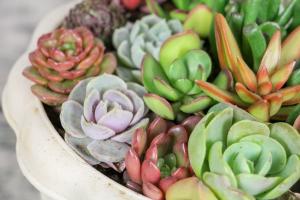Introduction
Aphids are common pests that can invade tomato plants, causing harm to the plant and reducing fruit yield. These small insects can go unnoticed, but their impact on the plant's growth and yield can be significant. Therefore, it's crucial to learn what aphids on tomato plants look like and how to handle them.
Identification of Aphids on Tomato Plants
Aphids are tiny, pear-shaped insects that can grow up to 1/4 inch in length. They come in various colors, including green, yellow, black, and light brown. However, tomato aphids are typically pear-shaped and pale yellow-green, and they have long legs and antennae.
You may check for aphids on the leaves by looking for signs of an infestation. When you check the undersides of leaves, you will find aphids clustered together, often with white cotton-like clusters on the tips of new growth. On the stem or the leaves, you'll likely find circular, yellow patches surrounded by a green halo that indicates aphids' feeding.
Damages Caused by Aphids on Tomato Plants
Aphids are often hard to detect, but their damage is visible. They suck the sap out of the plant, leaving it dehydrated and weak. This leaves the plant susceptible to other infections and diseases, which can reduce the plants' yield. Additionally, aphids excrete honeydew, a sticky waste that turns into black sooty mold and further damages the plant. Furthermore, the honeydew attracts other pests, such as ants, which protect the aphids from predators and make the infestation worse.
Prevention and Treatment of Aphids on Tomato Plants
One of the best ways to prevent aphids from invading your tomato plants is to use companion planting. For example, planting garlic, onion, basil, or marigold around your tomato plants can repel aphids. Besides, keep the garden tidy to avoid lingering pests.
When you spot aphids on your tomato plant, there are several ways to handle them. One method is to blast them off the plant with a powerful stream of water. Another option is to use insecticidal soap, neem oil, or horticultural oil. You can also introduce beneficial insects such as ladybugs or lacewings, which are natural predators of aphids, or use sticky traps to reduce their population.
Conclusion
Identifying aphids on tomato plants is key to protecting your plant's growth and yield. With the knowledge and tactics mentioned above, you can prevent and get rid of the aphids that damage your plants naturally. Keep your garden tidy and use preventive measures, and you can have a healthy and thriving tomato plant that will produce delicious fruits for you and your family.

 how many times do yo...
how many times do yo... how many planted tre...
how many planted tre... how many pine trees ...
how many pine trees ... how many pecan trees...
how many pecan trees... how many plants comp...
how many plants comp... how many plants can ...
how many plants can ... how many plants and ...
how many plants and ... how many pepper plan...
how many pepper plan...
































